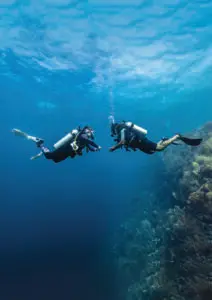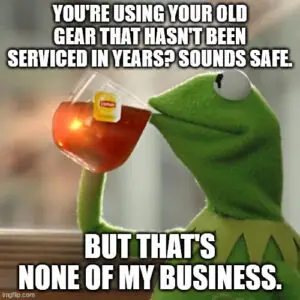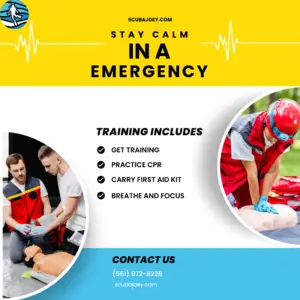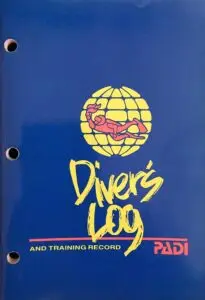Introduction
Scuba diving opens up a world of underwater wonders, but with great adventure comes great responsibility. One of the most critical aspects of scuba diving is understanding and respecting depth limits associated with various certification levels. This article will explore certification levels and their corresponding maximum depths across different scuba diving organizations, with a focus on PADI (Professional Association of Diving Instructors) and comparisons to other prominent agencies. Whether you’re a novice diver or an experienced underwater explorer, this comprehensive guide will provide valuable insights into the world of scuba certifications and depth limits.
Understanding Dive Certifications and Depth Limits
Dive certifications serve as a measure of a diver’s training, experience, and competence. They are designed to ensure that divers have the necessary skills and knowledge to safely dive at specific depths and in various conditions. Depth limits associated with each certification level are not arbitrary; they are carefully determined based on factors such as:
- Physiological effects of pressure at different depths
- Complexity of dive planning and execution
- Required decompression procedures
- Potential risks and emergency management
It’s crucial to understand that these limits are set for safety reasons and should be respected by all divers, regardless of their perceived skill level or comfort in the water.
Certification Levels and Maximum Depths Across Organizations
Let’s explore the certification levels and their associated depth limits for PADI and other major scuba diving organizations:
Entry-Level Certifications
PADI:
- Scuba Diver: 40 feet (12 meters)
- Open Water Diver: 60 feet (18 meters)
SSI (Scuba Schools International):
- Open Water Diver: 60 feet (18 meters)
NAUI (National Association of Underwater Instructors):
- Scuba Diver: 60 feet (18 meters)
SDI (Scuba Diving International):
- Open Water Scuba Diver: 60 feet (18 meters)
BSAC (British Sub-Aqua Club):
- Ocean Diver: 66 feet (20 meters)
These entry-level certifications provide comprehensive training in dive theory and essential skills. Key skills include basic dive planning, buoyancy control, and underwater navigation. PADI’s Scuba Diver certification is a subset of the Open Water Diver course and requires diving with a PADI professional.
Advanced Recreational Certifications
These certifications build on entry-level skills and introduce divers to different diving specialties. PADI’s Advanced Open Water Diver, for example, includes a deep dive (to 100 feet) and an underwater navigation dive, plus three additional adventure dives. The Deep Diver specialty courses focus specifically on the skills and knowledge required for deeper diving within recreational limits.
PADI:
- Advanced Open Water Diver: 100 feet (30 meters)
- Deep Diver Specialty: 130 feet (40 meters)
SSI:
- Advanced Adventurer: 100 feet (30 meters)
- Deep Diving Specialty: 130 feet (40 meters)
NAUI:
- Advanced Scuba Diver: 130 feet (40 meters)
SDI:
- Advanced Adventure Diver: 100 feet (30 meters)
- Deep Diver: 130 feet (40 meters)
BSAC:
- Sports Diver: 115 feet (35 meters)
- Dive Leader: 164 feet (50 meters)
Technical Diving Certifications
Technical diving certifications introduce divers to decompression procedures, extended bottom times, and the use of specialized gas mixtures. These courses require advanced training in dive planning, gas management, and emergency procedures.
PADI:
- Tec 40: 130 feet (40 meters)
- Tec 45: 145 feet (45 meters)
- Tec 50: 165 feet (50 meters)
- Tec Trimix 65: 210 feet (65 meters)
SSI:
- Extended Range: 165 feet (50 meters)
- Technical Extended Range: 210 feet (65 meters)
NAUI:
- Technical Diver: 130-190 feet (40-58 meters)
- Extreme Exposure: Beyond 190 feet (58 meters)
SDI:
- Technical Extended Range: 170 feet (52 meters)
- Advanced Trimix: 300 feet (91 meters)
BSAC:
- Advanced Diver: 213 feet (65 meters)
Key skills for technical diving include:
- Decompression procedures
- Redundant gas systems
- Accelerated decompression techniques
- Advanced gas planning
- Use of multiple gas mixtures
- Trimix dive planning (for deeper technical dives)
To Be Continued....
In conclusion, understanding scuba certification levels and their associated depth limits is fundamental to safe and responsible diving. We’ve explored the certification structures of major organizations like PADI, SSI, NAUI, SDI, and BSAC, from entry-level certifications to advanced technical diving qualifications. Each level builds upon the previous, gradually increasing depth limits as divers gain more knowledge, skills, and experience.
These certification levels and depth limits aren’t arbitrary restrictions, but carefully determined guidelines based on physiological, safety, and practical considerations. They ensure that divers are adequately prepared for the challenges they might face at different depths, from the increased effects of pressure to more complex dive planning and gas management.
Remember, regardless of the certifying organization, the core principle remains the same: dive within the limits of your training and certification. Respecting these limits is crucial for your safety and enjoyment underwater.
But understanding certification levels and depth limits is just the beginning of the journey. In Part 2 of our comprehensive guide, we’ll dive deeper into the practical aspects of scuba diving at various depths. What safety considerations should you keep in mind as you explore deeper waters? How can continuous education enhance your diving experience and safety? How do certification levels truly compare across different organizations?
Join us in Part 2 as we explore these critical questions and more. We’ll provide essential insights into deep diving safety, the importance of ongoing education in scuba diving, and a detailed comparison of certification levels across organizations. Whether you’re looking to push your limits or simply want to dive more confidently within your current certification, Part 2 will equip you with the knowledge to make informed decisions about your underwater adventures. Stay tuned for more in-depth exploration of the fascinating world of scuba diving!







